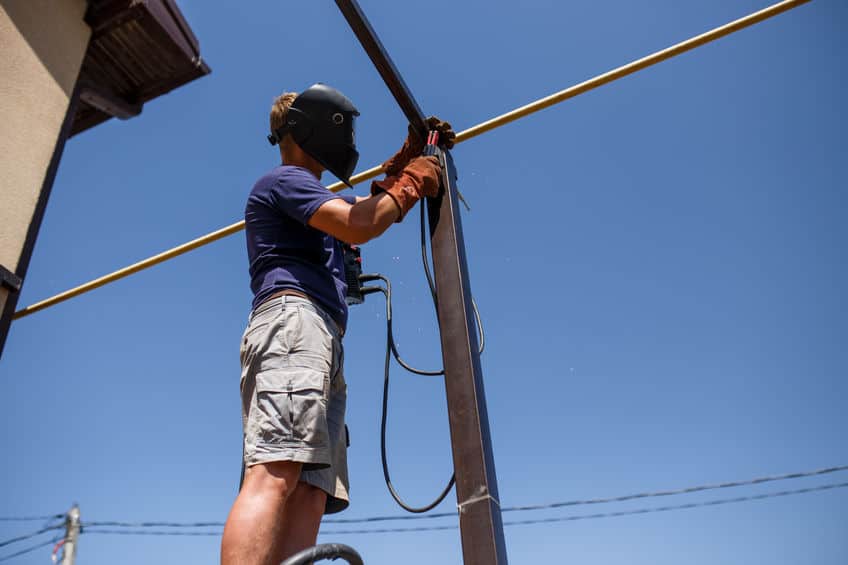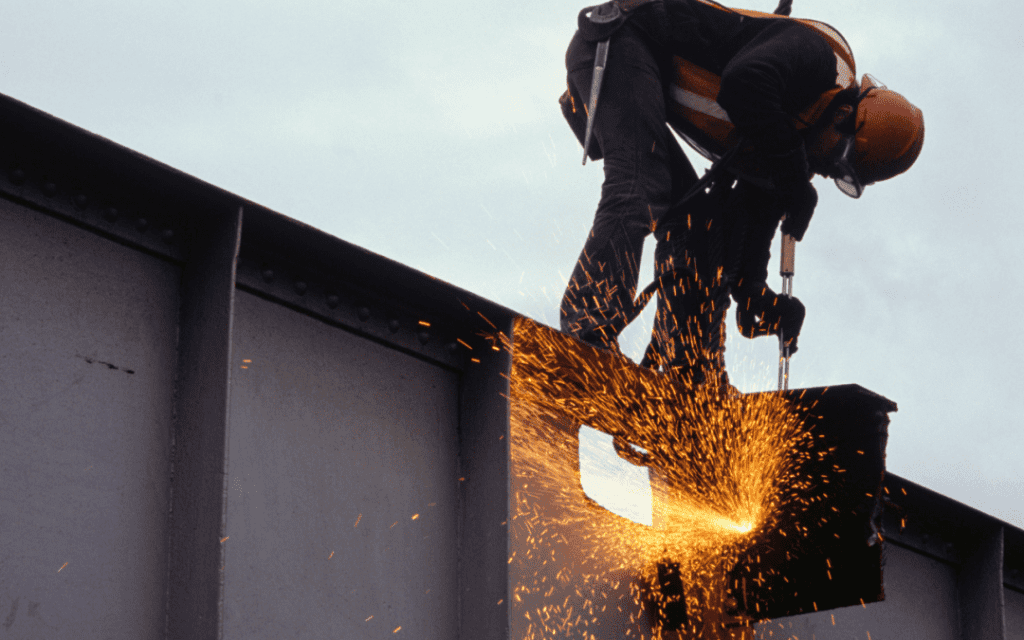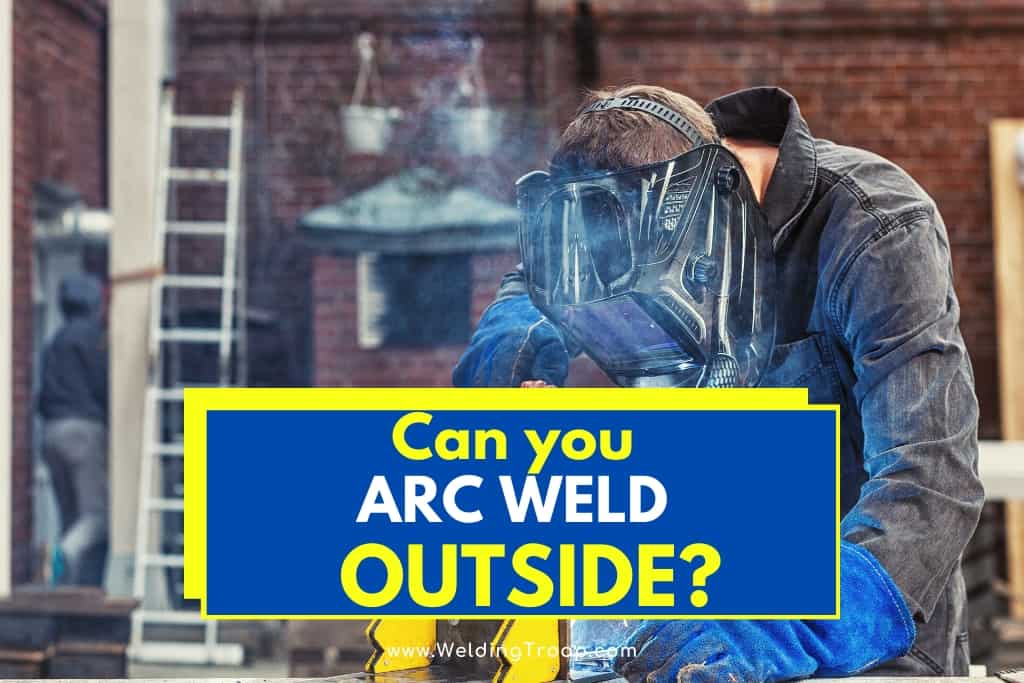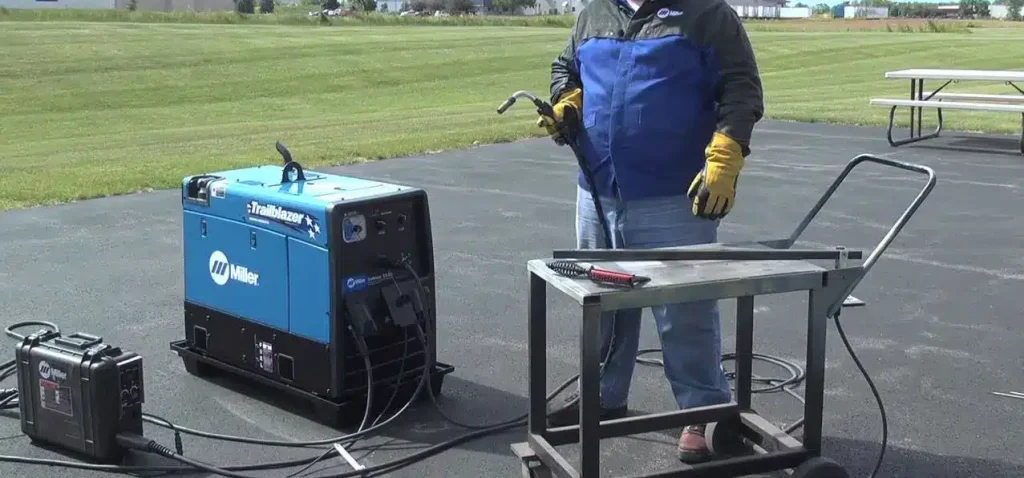Are you eager to try welding but unsure if you can do it outdoors? Well, the answer is yes!
Welding outdoors is not only possible but also quite common. Whether you want to tackle a small project in your backyard or work on a more significant construction site, welding outdoors offers benefits and challenges.
In this article, we will explore the possibilities and considerations of welding in the great outdoors, giving you the confidence to take your welding skills outside.
So, let’s dive in and discover the world of outdoor welding!
Safety Considerations
When it comes to welding, safety should always be the top priority. Before you begin any welding project outdoors, it is essential to consider various safety factors to protect yourself and those around you.
This article will guide you through the essential safety considerations of outdoor welding.
Protective Equipment
Proper protective equipment is crucial when welding outdoors. The intense heat, bright UV light, and flying sparks pose potential risks to your eyes, face, and body. Therefore, investing in reliable welding gear is a must. A welding helmet with a darkened visor and UV protection is essential to shield your eyes from harmful radiation.
Additionally, flame-resistant clothing, such as a welding jacket and pants, will help protect your skin from burns. Don’t forget about respiratory protection, especially in environments with poor ventilation. A respirator or a welding mask with a built-in respirator can filter out hazardous fumes and particles.
Weather Conditions
Weather conditions significantly influence outdoor welding. Before you embark on any welding project, consider the current and forecasted weather. Rain, wind, and extreme temperatures can affect the quality of your welds and pose safety hazards. It is best to avoid welding during inclement weather conditions that may compromise the integrity of your work or put you at risk.
Fire Safety
Welding involves high temperatures and sparks, making fire safety a critical aspect. Always have fire safety measures in place when welding outdoors. Keep a fire extinguisher nearby and ensure it is in good working condition.
Regularly inspect the area for flammable materials and remove or store them safely away from your welding site. It is also advisable to have designated fire-watch personnel present to monitor the surrounding area for any signs of fire.
Types of Welding
Understanding the different welding techniques is essential whether you’re indoors or outdoors. Each welding method has advantages and disadvantages, and knowing which suits your specific outdoor project will lead to better results.
MIG Welding
MIG (Metal Inert Gas) welding is a popular and versatile technique for outdoor projects. This method uses a wire electrode to melt and join metal pieces together. MIG welding is known for its speed and ease of use, making it ideal for outdoor projects that require efficiency and productivity.
TIG Welding
TIG (Tungsten Inert Gas) welding is another widely used technique in outdoor welding. Unlike MIG welding, TIG welding uses a tungsten electrode to create an arc and join metals. TIG welding produces high-quality, precise welds, making it suitable for outdoor projects that demand accuracy and aesthetic appeal.
Stick Welding
Stick welding, also known as Shielded Metal Arc Welding (SMAW), is a versatile welding method commonly used in outdoor applications. This technique involves a consumable electrode coated in flux that creates the arc. Stick welding can handle thicker materials and is well-suited for outdoor projects that require solid and durable welds.
Advantages of Welding Outdoors
Welding outdoors offers several advantages that can enhance your welding experience and the overall quality of your projects.
Increased Ventilation
One significant advantage of welding outdoors is the improved ventilation compared to confined indoor spaces. The open-air dissipates welding fumes quickly, reducing the risk of inhaling hazardous substances. This increased ventilation is especially beneficial when working with materials that produce toxic gases, such as galvanized steel.
More Space and Mobility
Outdoor welding provides you with ample space to maneuver and work comfortably. Unlike indoor welding, where limited space can restrict your movements, outdoor environments offer more freedom to position yourself and your equipment optimally. This increased mobility enables you to tackle larger projects easily and ensures better accessibility to hard-to-reach areas.
Better Visibility
Natural lighting is a significant advantage of welding outdoors. The open sky provides abundant light that helps you see your workpiece more clearly, resulting in higher precision and better weld quality. With enhanced visibility, you can detect imperfections or irregularities and make adjustments promptly, ultimately producing superior welds.
Disadvantages of Welding Outdoors
While welding outdoors has advantages, it also presents specific challenges and disadvantages that must be considered.
Weather Dependency
One of the primary drawbacks of outdoor welding is the dependency on weather conditions. Rain, wind, and extreme temperatures can hinder your progress and affect the quality of your welds. Adverse weather conditions may create an unstable welding environment, compromise the integrity of your welds, or even pose safety risks. Monitoring the weather forecast and planning accordingly to mitigate these challenges is crucial.
Safety Hazards
Outdoor welding carries inherent safety hazards due to unpredictable surroundings. From uneven or unstable ground to potential tripping hazards, the outdoor environment can harm your physical well-being. Additionally, flammable materials or inadequate fire safety precautions can increase the likelihood of accidents. Maintaining a vigilant attitude and adhering to proper safety protocols are crucial when welding outdoors to minimize these risks.
Interference from Sunlight
While natural light can benefit visibility, excessive sunlight can cause visibility issues and interfere with your welding process. Glare from the sun can make it difficult to see the weld pool or the arc, producing poor-quality welds. In such cases, welding shades, curtains, or proper positioning can help minimize the impact of sunlight and ensure optimal visibility.
Preparation for Outdoor Welding
Preparation is critical to successful outdoor welding. Taking the time to plan and prepare adequately will contribute to a safer and more efficient welding experience.
Choosing the Right Location
Selecting the appropriate location is crucial for outdoor welding. Look for areas that provide ample ventilation, are away from flammable materials, and have a relatively flat and stable surface. Avoid locations prone to strong winds or areas with limited accessibility, as these conditions can affect the quality of your welds and compromise your safety.
Clearing the Area
Before starting your welding project, clear the surrounding area of potential hazards or obstacles. Remove flammable materials, debris, and any objects that could obstruct your movement. A clean and organized workspace will minimize the risk of accidents and ensure a smoother welding process.
Securing Materials
Ensure the materials you will be welding are securely positioned and adequately supported. Unstable or inadequately secured materials can lead to misaligned welds, compromising the structural integrity of your projects. Use clamps, jigs, or braces to secure the workpiece firmly, and double-check that it is level and stable before you begin welding.
Weather Conditions and Welding
Weather conditions play a significant role in the success of outdoor welding projects. Understanding how different weather elements can affect your welds and taking appropriate measures to mitigate any potential negative impact is crucial.
Wind Speed and Direction
Wind can significantly impact the quality and safety of outdoor welding. Strong winds can blow away shielding gases, affecting the weld pool and potentially causing porosity or incomplete fusion. Monitoring wind speed and direction and adjusting your welding technique are essential. Setting up windbreaks or welding curtains can help create a more controlled environment and prevent excessive wind interference.
Rain and High Humidity
Rain and high humidity can introduce moisture to your welding process, leading to undesirable outcomes. Moisture can cause porosity, cracks, and weak welds, compromising the strength and integrity of your weldments. When welding in rainy or humid conditions, postponing the project until the weather improves is best. If immediate welding is necessary, consider using windshields or welding tents to prevent rainwater or excess humidity from affecting your weld quality.
Extreme Temperatures
Extreme temperatures, whether excessively hot or cold, can affect your welding process. In sweltering conditions, the material may absorb heat more rapidly, which can lead to distortion or warping. Conversely, welding in frigid temperatures can cause joint brittleness and reduce shielding gas effectiveness. If possible, avoid welding during extreme temperatures and choose more optimal weather for your outdoor welding projects.
Protective Equipment for Outdoor Welding
Using the proper protective equipment is essential for maintaining your safety during outdoor welding projects. Here are some essential items to consider.
Welding Helmet and Eye Protection
Investing in a high-quality welding helmet with a darkened visor and UV protection is crucial. The helmet shields your face and eyes from sparks and the intense UV light produced during welding and provides necessary eye protection against harmful radiation. Ensure your helmet fits securely and comfortably to ensure optimal safety and visibility.
Flame-Resistant Clothing
Welding involves exposure to intense heat and sparks, making flame-resistant clothing necessary. A welding jacket and pants made from fire-resistant materials such as leather or heavy cotton provide additional protection for your skin. Avoid wearing synthetic fabrics or loose clothing that can easily catch fire or melt.
Respiratory Protection
Proper respiratory protection is crucial, especially when welding outdoors with limited ventilation. Welding fumes contain hazardous particles and gases that can be harmful if inhaled. A high-quality respirator or a welding mask with a built-in respirator will help filter out these harmful substances and protect your respiratory system. Ensure your respiratory protection is suitable for welding fumes and meets safety standards.
Fire Safety Measures
Welding involves working with high temperatures and sparks, making fire safety critical, especially when welding outdoors. Implementing the following fire safety measures will help mitigate the risk of fire hazards.
Fire Extinguishers
Having a fire extinguisher readily available near your welding site is essential. Ensure that the fire extinguisher is in good working condition and that you know how to operate it. Choose an extinguisher suitable for Class A, B, and C fires, as these are the most common types of fires encountered during welding.
Keeping Flammable Materials Away
Before you start welding, remove or secure any flammable materials nearby. Flammable substances, such as solvents, gasoline, or oily rags, should be kept safe from your welding area to minimize the risk of accidental fires. Maintain a clean and clutter-free workspace to prevent the accidental ignition of combustible materials.
Fire-Watch Personnel
Assigning fire-watch personnel is prudent to enhance fire safety during outdoor welding. This individual should closely monitor the surrounding area and be prepared to respond promptly in case of fire. Their role is to identify and extinguish any sparks, embers, or small fires that may occur during the welding process. The fire-watch personnel should also be knowledgeable about fire safety procedures and have access to a functioning fire extinguisher.
Tips for Effective Outdoor Welding
To ensure successful and efficient outdoor welding, keep these tips in mind:
Proper Grounding
When welding outdoors, ensure proper grounding for electrical safety. Establish a reliable ground connection by connecting the workpiece to a grounding system. This minimizes the risk of electrical shocks and helps maintain a stable arc during welding.
Storing Welding Equipment
Store your welding equipment in a dry and secure location when not in use. Moisture and exposure to the elements can damage your welding machine and accessories. Invest in a durable carrying case or welder cart to protect your equipment from potential damage during transportation or storage.
Regular Equipment Maintenance
Perform regular maintenance on your welding equipment to ensure optimal performance. Clean the welding gun, replace worn-out consumables, and inspect cables and connections for any signs of damage. By maintaining your equipment correctly, you can avoid unexpected failures, improve weld quality, and extend the lifespan of your welding machine.
Legal Considerations
When performing outdoor welding, knowing the legal considerations that may apply to your location is essential. Considering these factors will help you comply with regulations and ensure a safe and environmentally conscious welding practice.
Permits and Regulations
Check with your local authorities regarding any permits or regulations related to outdoor welding. Some jurisdictions may require specific permits or certifications, especially for welding in public spaces or construction sites. Familiarize yourself with these requirements to operate within the legal boundaries.
Environmental Impact
Welding can have environmental impacts, particularly in outdoor settings. Be mindful of potential pollutants, such as welding fumes or waste materials, and take appropriate measures to minimize their impact. Dispose of hazardous waste properly and consider implementing eco-friendly practices, such as welding processes that generate fewer emissions.
Noise Restrictions
In certain areas, noise restrictions may limit your outdoor welding activities. Before commencing welding projects involving loud noise, check local noise ordinances to ensure compliance. Using noise-reducing equipment or working during permitted time slots can help mitigate noise-related concerns and prevent potential conflicts.
In conclusion, welding outdoors offers advantages and disadvantages that must be carefully considered.
By prioritizing safety, understanding different welding techniques, preparing adequately, and adhering to legal considerations, you can enjoy the benefits of outdoor welding while minimizing risks and ensuring successful projects.
Always prioritize safety, use appropriate protective equipment, and comply with regulations to create a secure and efficient outdoor welding environment.










































